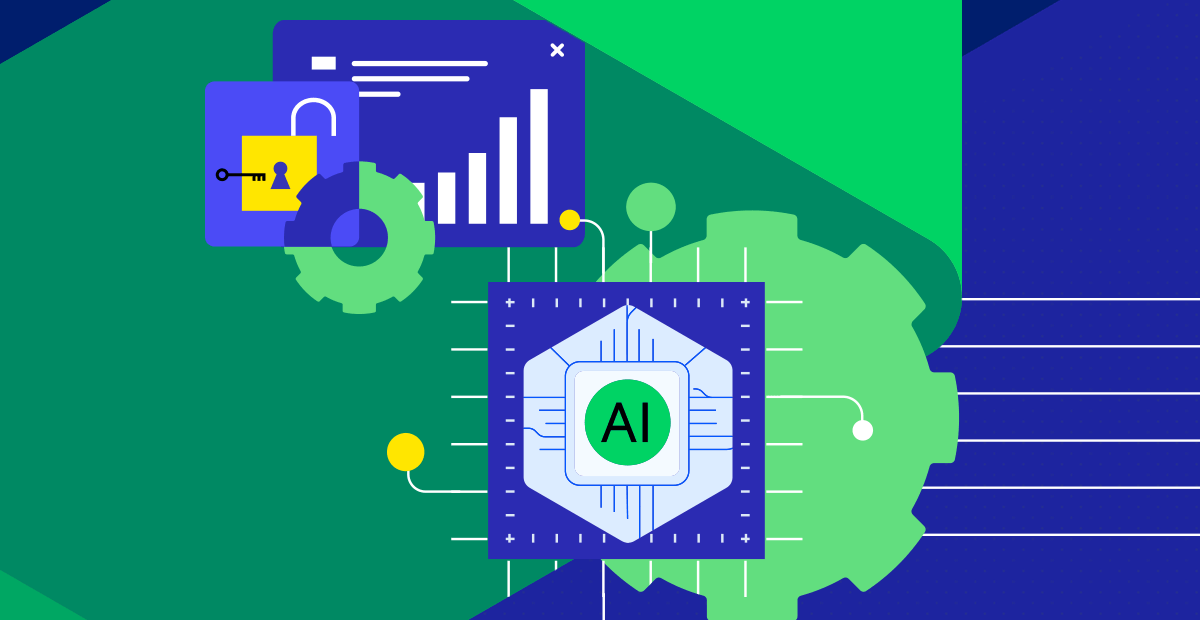In the fast-paced world of artificial intelligence (AI), businesses are always looking for new ways to use AI to improve operations, increase efficiency and create new opportunities. One breakthrough method is Retrieval Augmented Generation (RAG), which combines generative AI (genAI) with detailed, relevant data to deliver accurate, reliable and useful insights. This blog explores RAG, its benefits for businesses and how tools like the Progress Data Platform play a key role in implementing a Semantic RAG-based generative AI solution.
Starting with why you need a RAG-based solution with your generative AI application, let’s talk hallucinations.

Understanding Generative AI Hallucinations
Generative AI is known for its ability to create new content based on the patterns it has learned from vast datasets. One of the challenges with generative AI is that it can sometimes produce information that seems plausible but is incorrect or nonsensical. This phenomenon is known as a "hallucination."
Hallucinations occur when the AI generates responses that are not grounded in the data on which it was trained or on any logical basis. These can be minor inaccuracies or completely fabricated facts. In a business context, hallucinations can be problematic, leading to misinformation, erroneous decisions and a lack of trust in the AI system.
Understanding Retrieval Augmented Generation (RAG)
By grounding AI responses in a structured knowledge graph and validating them against a comprehensive knowledge model, RAG significantly reduces the chances of hallucinations. This leads to more accurate, trustworthy and actionable insights, which are crucial for business decision-making.
RAG is a method that connects business data with generative AI models, adding specific context and meaning while identifying and reducing hallucinations in the generative AI’s response. This context often comes from taxonomies or ontologies, which help the AI understand the data. By using a knowledge graph, RAG finds relationships and connections within the data, providing a strong framework for accurate response generation.
Key Components of RAG
- Contextual Data Enrichment: By using business-specific taxonomies and ontologies, RAG helps the AI understand the context and meaning behind the data.
- Knowledge Graphs: These graphs organize enriched data, revealing relationships and connections that ground the AI’s responses in factual information.
- Prompt Enhancement: When a user query is received, the knowledge graph frames the prompt, providing the generative AI with the necessary context to generate precise answers.
- Response Validation: The AI’s responses are checked against the knowledge model to confirm accuracy and reliability before presenting them to the user.

Benefits of RAG for Enterprise Organizations
Speed of Change
One of the standout benefits of RAG is its ability to adapt to changes in data and models. In today’s business environment, data is continually evolving, and AI models need regular updates to stay relevant and accurate. RAG's framework is inherently flexible and model-agnostic, allowing businesses to quickly adapt to these improved models, new releases or changes to the underlying data—without significant downtime or reconfiguration.
Improved Accuracy and Trust
RAG significantly improves the accuracy of AI-generated responses. Businesses can achieve high precision by grounding AI in a well-structured knowledge graph enriched with industry-specific data. Customers have reported accuracy rates in the high 90s—and even 100%. This accuracy builds trust in the AI system, as users can see where the AI got its answers and verify the information.
Faster Time to Production
Traditional AI implementation can be lengthy and resource-intensive, often taking months. With RAG, organizations have seen a dramatic reduction in this timeline. By using existing knowledge models and taxonomies, businesses can deploy generative AI solutions within weeks, quickly moving from concept to production-ready applications.
Cost Savings
RAG offers cost savings by optimizing the use of processing power. Since the knowledge graph provides rich contextual data, the prompts to the AI can be smaller and more focused. This reduces the computational load and associated costs, making it more efficient than traditional AI methods.
Scalability and Security
Enterprise-grade RAG solutions must be designed to be scalable and secure. They must handle large volumes of data and queries while maintaining strict security protocols to protect sensitive business information. This makes RAG, combined with the Progress Data Platform, an ideal choice for large organizations with complex data environments.
Real-World Applications
Businesses are using RAG for various applications, including:
How Progress Data Platform Enhances RAG-Based GenAI Solutions
Progress MarkLogic: Building Your Knowledge Graph Foundation
Progress MarkLogic is a powerful database server that excels in managing and integrating complex data. It is ideal for building and maintaining an agile data platform that can store the knowledge graphs that support RAG-based solutions. With MarkLogic, businesses can:
Progress Semaphore: Contextualizing Your Data for Smarter AI
Progress Semaphore, a leading semantic AI platform, complements the Progress Data Platform by enriching data with industry-specific taxonomies and ontologies. This semantic enrichment helps the AI understand the context and meaning behind the data. With Progress Semaphore, businesses can:
- Create and Manage Taxonomies: Develop comprehensive taxonomies and ontologies that capture industry-specific language and terminology.
- Improve Data Discoverability: Enhance search and retrieval capabilities by adding semantic metadata to the data through classification using business-relevant language from subject-specific taxonomies and ontologies.
- Support Advanced Analytics: Enable sophisticated data analysis and insights by leveraging semantic relationships within the knowledge graph.

Conclusion
Retrieval Augmented Generation represents a significant advancement in AI, offering businesses a powerful tool to enhance the accuracy, reliability and efficiency of their AI solutions. By integrating RAG with our robust Progress Data Platform, enterprises can unlock the full potential of their data, driving value from their investments in generative AI and solving real business challenges.
As the AI landscape evolves, embracing innovative approaches like RAG will be crucial for businesses looking to stay ahead. With the ability to provide contextually rich, accurate and actionable insights, RAG-based generative AI solutions are poised to transform how businesses operate, innovate and compete in the digital age.
Check out the latest episode of The Cloud Architects Podcast where I join the team to talk RAG, generative AI and how to enhance accuracy and trust using enterprise data. We even explore how these advancements impact us—the humans in the loop.
Glossary
Below are some definitions for the key terms discussed in the article.
AI (Artificial Intelligence): The simulation of human intelligence in machines that are programmed to think and learn.
GenAI (Generative AI): A type of AI that can create new content, such as text, images or music, based on patterns the AI learned from data.
LLM (Large Language Model): A type of AI model trained on vast amounts of text data to understand and generate human-like language.
Taxonomies: Systems for categorizing and organizing information based on hierarchical relationships.
Ontologies: Detailed frameworks that describe the relationships and properties of concepts within a specific domain.
Knowledge Graph: A network of data points connected by relationships, used to model complex information and find hidden connections.
Semantic Enrichment: The process of adding contextual meaning to data, making it more understandable and useful for AI systems.
RAG (Retrieval Augmented Generation): A method that combines generative AI with detailed, contextually relevant data to improve accuracy and reliability.
Considering combining your enterprise data with a semantic, RAG-based, generative AI solution or looking for more information on the topic? Download our free guide.

Philip Miller
AI Strategist
Philip Miller serves as an AI Strategist at Progress. He oversees the messaging and strategy for data and AI-related initiatives. A passionate writer, Philip frequently contributes to blogs and lends a hand in presenting and moderating product and community webinars. He is dedicated to advocating for customers and aims to drive innovation and improvement within the Progress AI Platform. Outside of his professional life, Philip is a devoted father of two daughters, a dog enthusiast (with a mini dachshund) and a lifelong learner, always eager to discover something new.

